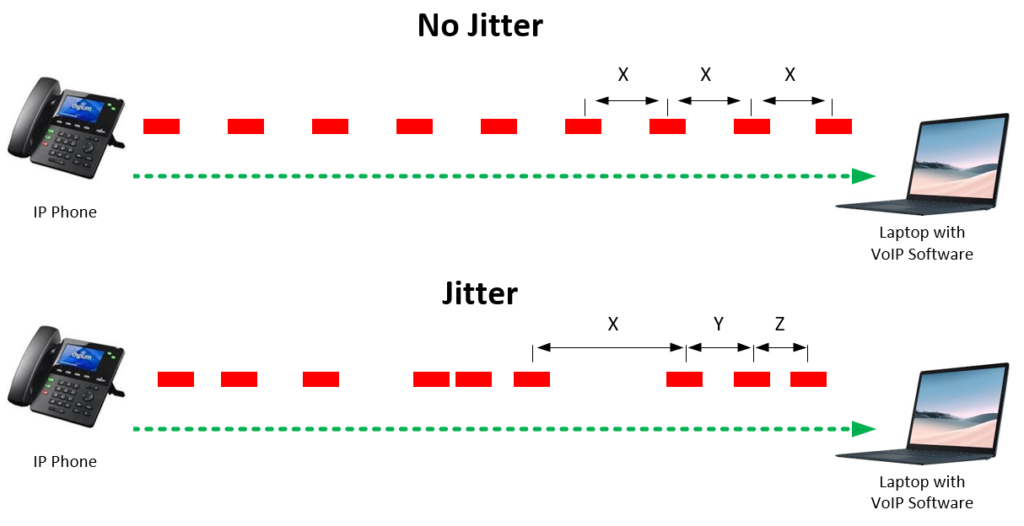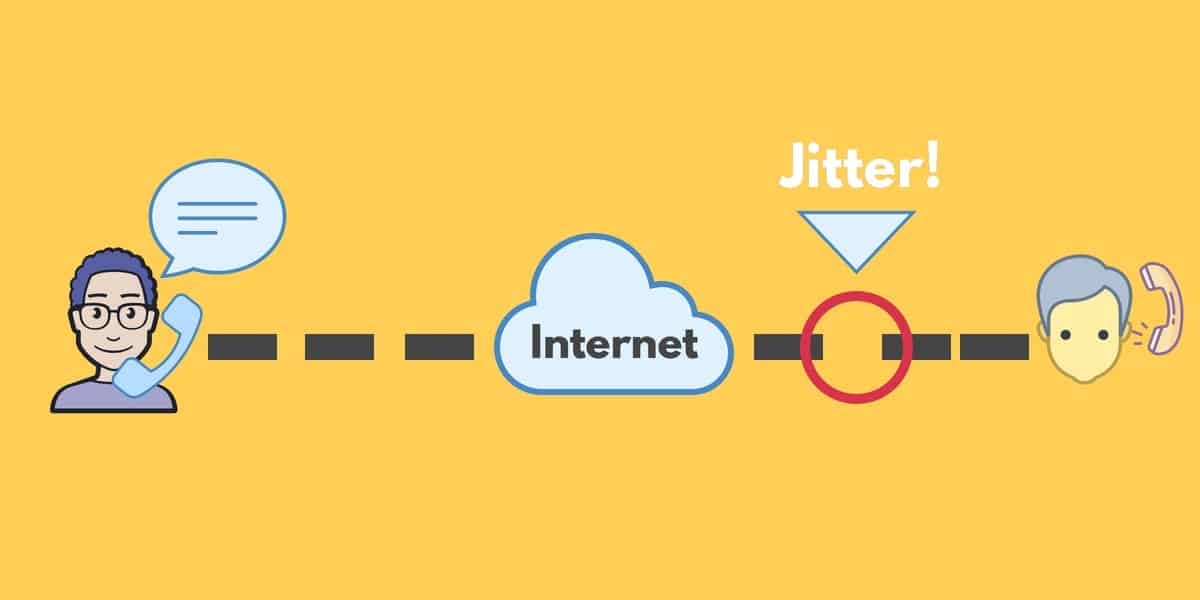What is Jitter in Networking
Jitter in networking refers to the variation in the time it takes for data packets to travel across a network. Ideally, these packets would arrive at consistent intervals, but jitter causes them to be delivered inconsistently. This can be caused by several factors, including:
- Network congestion: When a lot of devices are using the network at once, it can create traffic jams that delay some packets more than others.
- Poor hardware performance: Outdated or overloaded routers and switches can struggle to keep up with data flow, leading to delays.
- Packet prioritization issues: If all data packets are treated equally, important real-time traffic like video calls can get stuck behind less urgent data transfers. Read about What is Bandwidth Saver
Jitter is especially problematic for applications that rely on real-time data, such as:
- Video conferencing: Choppy or stuttering video can be a real pain during a video call.
- Online gaming: Inconsistency in data delivery can lead to lag, which can make online games unplayable.
- VoIP calls: Jitter can cause voice calls to sound choppy or even drop out entirely.

There are ways to mitigate jitter, such as using jitter buffers which temporarily store incoming packets and release them in a smooth stream. However, the best solution is to identify the root cause of the jitter and address it directly. This might involve upgrading network equipment, optimizing traffic flow, or switching to a different internet service provider.
Causes of Jitter
Jitter can stem from various factors within a network environment. One primary cause is network congestion, where increased traffic leads to delays in packet delivery. Additionally, packet delay variation, caused by routing inefficiencies or hardware limitations, contributes to jitter. Routing issues, such as path changes or packet loss, can also introduce variability in packet arrival times. Discover about Cyber Insurance Coverage Silverfort
Effects of Jitter
The effects of jitter can manifest in different ways, depending on the nature of the network and the applications running on it. In voice and video communication, jitter can result in poor audio and video quality, leading to choppy or garbled transmissions.
For data transfer applications, jitter can disrupt the orderly delivery of packets, potentially causing data loss or corruption. Real-time applications, such as online gaming or video conferencing, are particularly sensitive to jitter, as even slight delays can degrade the user experience.
Measuring Jitter
Network engineers use various methods to quantify and analyze jitter. One common approach is the use of a jitter buffer, a temporary storage mechanism that compensates for packet delay variations. Mean Opinion Score (MOS) is another metric used to assess the quality of audio and video transmissions affected by jitter. Additionally, network equipment often specifies a jitter tolerance, indicating the maximum allowable jitter for reliable operation.
Managing Jitter
To mitigate the effects of jitter, network administrators employ several strategies. Quality of Service (QoS) mechanisms prioritize certain types of traffic over others, ensuring that critical applications receive adequate bandwidth and minimal delay.
Traffic shaping techniques regulate the flow of data to prevent congestion and minimize packet delay variation. Buffering mechanisms, such as those employed in routers and switches, help smooth out fluctuations in packet arrival times.
Case Studies
Real-world examples of jitter abound in various network environments. From congested corporate networks to high-traffic internet backbones, jitter can impact performance and user satisfaction. Examining specific cases can provide valuable insights into the causes and consequences of jitter and inform effective mitigation strategies.
Future Trends
As networking technologies evolve, new approaches to addressing jitter are emerging. Advances in hardware design, such as faster processors and higher-capacity network interfaces, can help reduce packet processing delays. Software-based solutions, including sophisticated routing algorithms and adaptive QoS mechanisms, offer flexibility and scalability in managing jitter.

Looking ahead, the integration of artificial intelligence and machine learning technologies holds promise for optimizing network performance and minimizing jitter-related issues.
Conclusion
In conclusion, jitter is a critical aspect of network performance that warrants attention and proactive management. By understanding the causes and effects of jitter and implementing appropriate mitigation strategies, network administrators can ensure optimal service delivery and enhance user satisfaction. As networks continue to evolve and demand for high-quality digital communication grows, addressing jitter will remain a key priority for the foreseeable future.
FAQs
- What causes jitter in networking?
- Jitter can result from network congestion, packet delay variation, and routing issues.
- How does jitter affect VoIP calls?
- Jitter can lead to poor audio quality, causing choppy or garbled voice transmissions in VoIP calls.
- Can jitter be completely eliminated?
- While it’s challenging to eliminate jitter entirely, effective management strategies can minimize its impact on network performance.
- What role does QoS play in managing jitter?
- Quality of Service mechanisms prioritize certain types of traffic, ensuring that critical applications receive preferential treatment and minimizing jitter-related issues.
- Are there any open-source tools for measuring jitter?
- Yes, several open-source network monitoring tools offer features for measuring and analyzing jitter, providing valuable insights for network administrators.
